how to understand and avoid self-plagiarism
What is self-plagiarism?
Self-plagiarism is literally copying your own work. It can occur when quoting your own work without acknowledgement, or when you use the same piece of work for two different purposes.
Plagiarism is commonly defined as “taking someone else’s ideas or words and trying to pass them off as your own original work”. 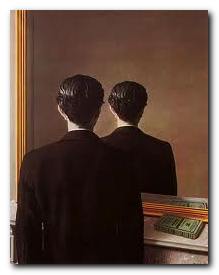 Most people understand the rules. If you quote from somebody else’s work, you put the words in quote marks and acknowledge the source, either as part of your text or in an endnote or footnote. Details of how to use quotations accurately are a separate issue. These conventions allow a reader to check the validity of the claims being made, the accuracy of the quotation, and to see (if necessary) how the quotation was used in its original context.
Most people understand the rules. If you quote from somebody else’s work, you put the words in quote marks and acknowledge the source, either as part of your text or in an endnote or footnote. Details of how to use quotations accurately are a separate issue. These conventions allow a reader to check the validity of the claims being made, the accuracy of the quotation, and to see (if necessary) how the quotation was used in its original context.
However, what if the words quoted were written by the same author of the text in question? Does this constitute plagiarism? If plagiarism is thought of as an issue of ‘ownership’, it would seem that it’s impossible to steal from yourself. But a number of cases exist where the re-use of your own work can easily become self-plagiarism.
Self-plagiarism in academic writing
It’s not normally permitted to submit a piece of work witten for one course and award as a submission for part of another. That is, a dissertation on The Poetry of Thomas Hardy written for a BA in English Literature cannot be re-submitted as part of the requirements for a separate MA course in’ Landscape and Literature’.
Even though the writing is an original piece of work by the author, academic rules forbid the re-use of material in this way. Dissertation and thesis rules normally stipulate that the material submitted for the award of a degree must not have appeared anywhere else before. Attempts to use the same material for two different purposes is sometimes known as ‘double-dipping’.
Academic authors are under a great deal of pressure to publish more and more of their research findings. This sometimes leads to the practice of publishing the same research data, with a slightly different analytic commentary. This is classed as duplicate or redundant publishing, and is severely frowned on by publishers. It is sometimes know as ‘Salami-slicing’.
The converse of this practice is known as ‘data augmentation’. This occurs when an already-published piece of work is re-published with new data, as if it were a new piece of work. This too is frowned on by the academic community and is regarded as a form of self-plagiarism.
Self-plagiarism and copyright
When a piece of work is published, copyright is automatically established, and rests with the original author. In contracts between publishers and authors, the author normally agrees to share copyright with the publisher. This means that the publisher is free to publish and re-use the author’s material (usually to the author’s benefit) and the author is normally allowed to maintain ownership of the work.
But if the author then re-cycles the work in question and publishes it elsewhere, this creates a case of both self-plagiarism and breach of copyright – since the original publisher may share copyright to the material.
Text recycling
Some parts of an academic paper may relate to research methods and procedures. The researcher describes accurately the sequence of events, the materials used, and the procedures of the research project. It’s quite likely that these will be the same in another experiment or piece of research of a similar kind.
There is therefore a great temptation to use templates of ‘boilerplate’ descriptions which can be re-used from one piece of research to the next. This is currently a contentious area of self-plagiarism, but it is worth noting that is is very easy to detect.
Citation stuffing
Academic authors are often rated according to how many times their work is quoted in academic papers and journals. Authors therefore have an built-in temptation to quote from their own work as much as possible – no matter how relevant it might be to the subject under discussion. In its worst cases, when authors articifically quote themselves for the sake of increasing the number of their own citations, this is therefore regarded as a form of self-plagiarism.
Fortunately, this is reasonably easy to detect, but it is a practice which is likely to continue so long as it is encouraged by publishers – who themselves also have an interest in their papers and journals being cited, thus enhancing their reputation.
You can perhaps see that there are very subtle links between academic honesty, accuracy of quotation, referencing, and the economics of both publishing and academic career structures. It is not the polite gentleman’s club that many people might imagine.
Internet publishing
Self-plagiarism is a very easy trap to fall into on the Internet. It’s possible to write an article, then publish it to a web site or a personal blog. Having done that, there is nothing to stop you posting the same article on another web site which aggregates similar materials. The article appears twice – with or without acknowledgement. This creates what in academic publishing is known as duplicate or redundant publication.
Unless you are a well-known author, few people are likely to complain, but it is worth noting that since Google will index the same article twice, the web page will immediately be given a lower ranking by Google, because it contains ‘duplicate material’. In terms of search engine rankings, the second instance of the article is competing against the first.
Newspaper journalists are faced with this problem all the time. But many of them now make a clear distinction between the articles they write as part of their contract with the newspaper, and the occasional smaller pieces they post onto personal blogs.
Re-cycling
Some people argue that if a piece of writing is published in a different context, for a different audience, then there can be little possibility of offence. The text may be re-edited to suit the new audience. But strictly speaking, this would still be plagiarism, unless the original source was acknowledged with a note such as: “This article first appeared as ‘Travels through Norther Italy’ in Atlantic Monthly Vol XII, number 28.”
Commercial publishing
One newspaper or magazine will occasionally reprint and article which has already been published elsewhere. The publisher usually does this fully conscious of the fact – and the article is likely to be followed by a note to its original source: “This article first appeared in Weekend magazine July 2010. The author may even be paid twice, but would not be accused of plagiarism, because no attempt to conceal the original source is being made.
Books which go out of print are occasionally re-printed by a separate publisher who see further commercial potential in the work. In such cases there will be an acknowledgement on the page listing publishing details – such as ‘First published by Acorn Books 1992’.
© Roy Johnson 2011
More on How-To
More on literary studies
More on writing skills

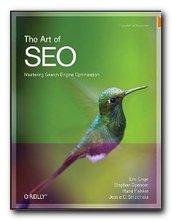
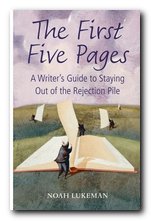
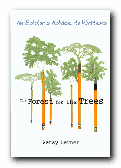
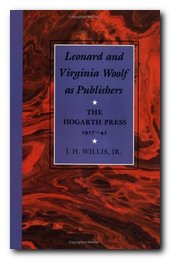

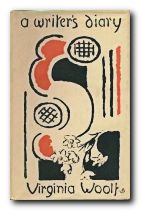 Many of the book jackets were designed by Virginia’s sister, the designer and painter
Many of the book jackets were designed by Virginia’s sister, the designer and painter 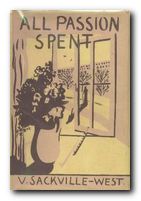 Virginia Woolf is now well known for her love-affair with fellow writer
Virginia Woolf is now well known for her love-affair with fellow writer 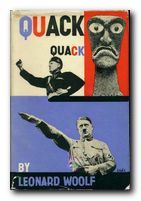 As their enterprise became more successful and the volume of business grew, they felt they needed more help. A succession of younger men were employed to help run the Press – many of them aspirant young writers themselves. Amongst them was Richard Kennedy, a sixteen year old boy, who recorded his very amusing memories of the experience in
As their enterprise became more successful and the volume of business grew, they felt they needed more help. A succession of younger men were employed to help run the Press – many of them aspirant young writers themselves. Amongst them was Richard Kennedy, a sixteen year old boy, who recorded his very amusing memories of the experience in 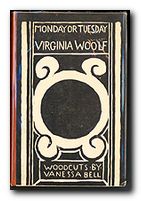 Curiously enough, as John Lehmann records in his account of these years, these disasters proved to be a benefit to the press. Its editorial offices and stock rooms were in the same building as its printers, and both were a long way away from London, where other publishers were suffering losses to their inventory as a result of air raids during the war. The odd thing is that despite paper rationing, sales rose, because of general shortages: “Books that in peacetime, when there was an abundance of choice, would have sold only a few copies every month, were snapped up the moment they arrived in the shops.”
Curiously enough, as John Lehmann records in his account of these years, these disasters proved to be a benefit to the press. Its editorial offices and stock rooms were in the same building as its printers, and both were a long way away from London, where other publishers were suffering losses to their inventory as a result of air raids during the war. The odd thing is that despite paper rationing, sales rose, because of general shortages: “Books that in peacetime, when there was an abundance of choice, would have sold only a few copies every month, were snapped up the moment they arrived in the shops.”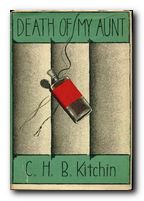 Disagreements rumbled on until after the war had ended. When the final split between them came about in 1946, Leonard solved the financial problem of raising £3,000 to keep the company afloat by persuading fellow publisher Ian Parsons of Chatto and Windus to buy out John Lehmann’s share. The Hogarth Press became a limited company within Chatto & Windus, on the strict understanding that Leonard Woolf had a controlling decision on what the Hogarth Press published.
Disagreements rumbled on until after the war had ended. When the final split between them came about in 1946, Leonard solved the financial problem of raising £3,000 to keep the company afloat by persuading fellow publisher Ian Parsons of Chatto and Windus to buy out John Lehmann’s share. The Hogarth Press became a limited company within Chatto & Windus, on the strict understanding that Leonard Woolf had a controlling decision on what the Hogarth Press published.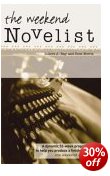
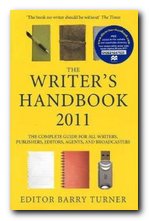
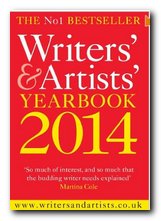 The Writers’ & Artists’ Yearbook
The Writers’ & Artists’ Yearbook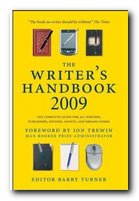 The Writer’s Handbook
The Writer’s Handbook The Guardian Media Directory
The Guardian Media Directory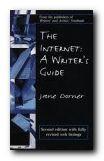 The Internet: A Writer’s Guide
The Internet: A Writer’s Guide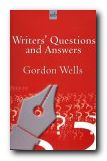 Writers’ Questions and Answers
Writers’ Questions and Answers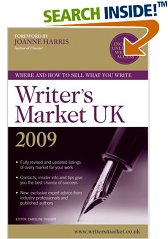 Writer’s Market UK 2009
Writer’s Market UK 2009